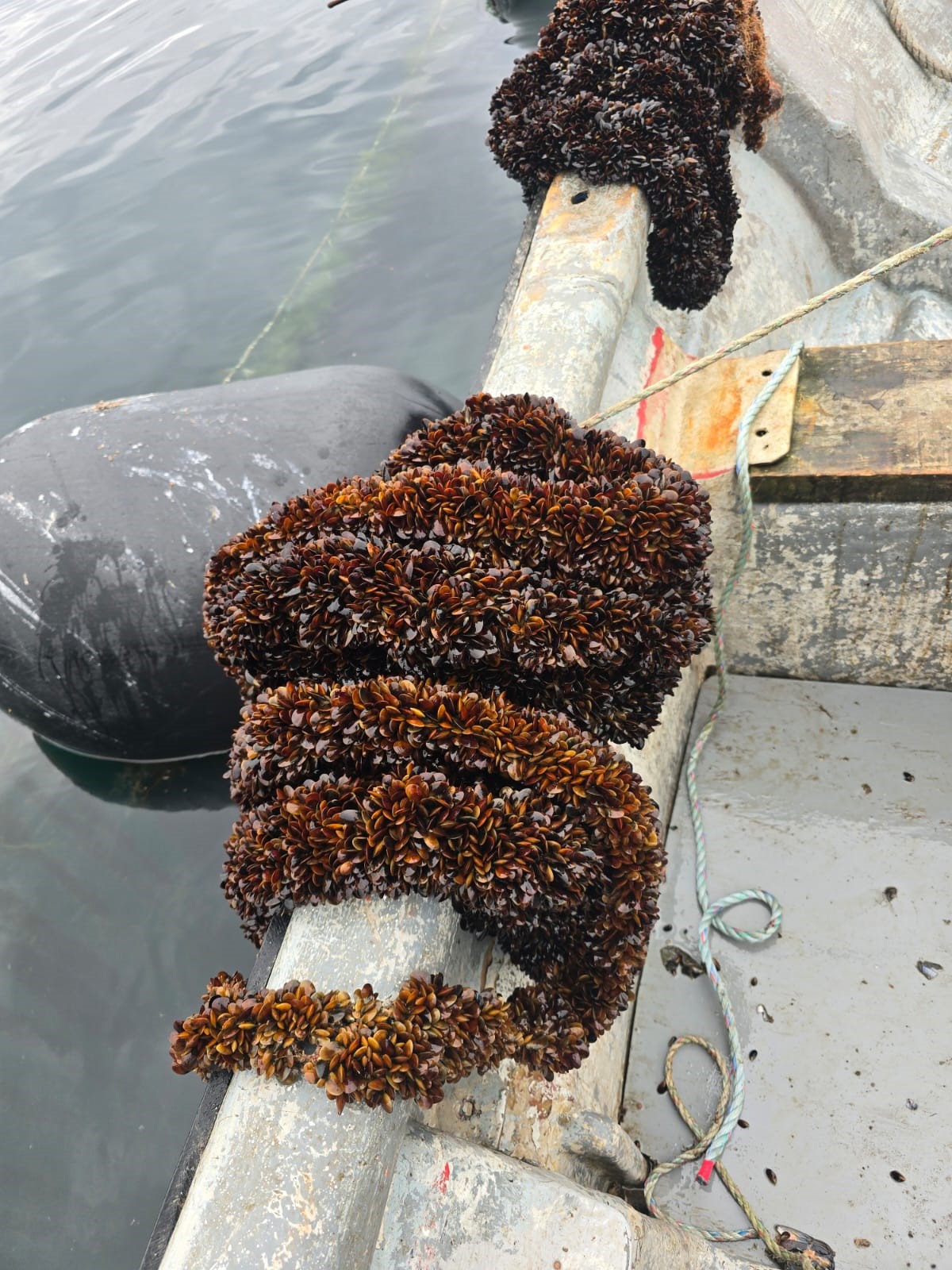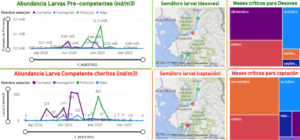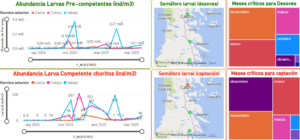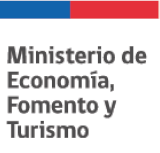
With the close of the 2024-2025 mussel seed collection season, the Mussel Seed Collection and Larval Monitoring Program, led by the Fisheries Development Institute (IFOP), provided a detailed analysis of the larval dynamics observed in the main farming areas. This information is available through the interactive platform “Endemic Seed.”
The season was characterized by an earlier start to the collection period, which began on September 25, 2024. This phenomenon was evident at the Cochamó station, where 225 competent larvae per cubic meter were recorded. This trend quickly spread to the rest of the Reloncaví Fjord, reaching a maximum of 544 larvae/m³ at the same station, indicating an earlier release of gametes compared to previous seasons. In this area, recruitment extended until the end of November.
 In Hualaihué, on the other hand, larval abundances were later than in previous years, with the Pichicolo station reaching its peak only in mid-January.
In Hualaihué, on the other hand, larval abundances were later than in previous years, with the Pichicolo station reaching its peak only in mid-January.
In the Reloncaví Sound, a decrease in the presence of competent larvae was observed. The Metri station did not exceed 33 larvae/m³ throughout the season, while Ilque Bay showed moderate increases in November and December, with peaks of 141 and 71 larvae/m³, respectively.
One of the season’s most significant milestones occurred at the Yaldad station (Southern Chiloé), where three significant peaks in larval abundance were recorded: on November 11, December 16, 2024, and January 31, 2025. These events reached levels above 362 larvae/m³, with a maximum of 481 larvae/m³. This performance represents not only an advance in the collection season in Southern Chiloé, but also a historic record within the program’s nearly 13 years of monitoring, considering that this station historically had very low abundances, despite its intensive use for collection and grow-out.
 In Central Chiloé, the Castro station recorded a single peak in early December with 99 larvae/m³, followed by an autumn event in March with 50 larvae/m³. Meanwhile, the Compu station showed a significant peak on November 16, with 517 larvae/m³, then began a progressive decline starting on December 18 (282 larvae/m³).
In Central Chiloé, the Castro station recorded a single peak in early December with 99 larvae/m³, followed by an autumn event in March with 50 larvae/m³. Meanwhile, the Compu station showed a significant peak on November 16, with 517 larvae/m³, then began a progressive decline starting on December 18 (282 larvae/m³).
These results provide a comprehensive and up-to-date view of mussel larval dynamics, providing key information for decision-making in the mussel farming sector, which continues to rely heavily on natural seed collection to sustain production.
Collector collection: results consistent with larval dynamics
The behavior of competent larvae was directly reflected in the collection levels in the collectors. In the Reloncaví Fjord, collection was tangible, with averages close to 30,000 units per collector and peaks exceeding 100,000 units in some areas, from Cochamó to Chaparano.
In the Reloncaví Sound, in line with the low larval abundance, catches were very low, with records not exceeding 1,000 units per collector.
Finally, the Hualaihué area showed irregular behavior, with reports of spat shedding and highly variable results, ranging from good to low catches, depending on the sector.
It should also be noted that the Mussel Larval Monitoring Program, implemented by IFOP, is part of the ongoing research program of the Undersecretariat of Fisheries and Aquaculture.
Press related links:




